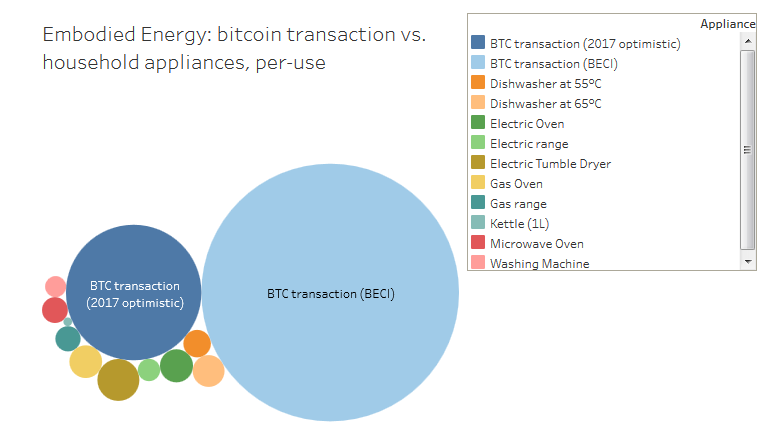In the 2017 America’s Cup, the Emirates Team New Zealand introduced stationary bikes instead of hand cranks to power the hydraulic system that steers the boat. Because our legs are stronger than our arms, pedal powered ‘grinding’ allows for quicker tacking and gybing in a race. The innovation could also be useful to reduce the required manpower for a new age of sail.
Bike Powered Catamaran Control
Dealing with Human Wastes in Uncertain Urban Environments
After the January 2010 earthquake in Haiti nearly 1.5 million people in the capitol were living in camps without access to sanitation. In response to the crisis, international agencies installed thousands of toilets within weeks. However, the absence of waste treatment facilities in the country further complicated the sanitation response.
The first treatment facility constructed post – earthquake was a thermophilic composting site designed to treat the wastes from 20,000 earthquake victims living in camps. Despite multiple hurricanes, a cholera epidemic, and political unrest, the SOIL composting facilities have treated over 500,000 gallons of human waste in the past three years, converting it to pathogen free compost, over 10,000 gallons of which has been sold for use in agriculture and reforestation projects.
The experience of thermophilic composting in Haiti is unique in scale and duration and can have global implications for waste treatment in both emergency and development contexts. The simple infrastructure requirements relative to more advanced technological approaches allow for rapid implementation in the wake of a disaster. The infrastructure itself is not dependent on an energy source and materials for construction can be sourced locally. Additionally, the straightforward operation and maintenance facilitate locally managed repairs and on-going service provision.
Thermophilic composting of human wastes in uncertain urban environments: a case study from Haiti (PDF), SOIL Haiti.
The Energy Performance Gap
 The energy performance gap refers to the failure of energy improvements, often undertaken at great expense, to deliver some (or occasionally all) of the promised savings. A study last year of refurbished apartment buildings in Germany, for instance, found that they missed the predicted energy savings by anywhere from 5 to 28 percent. In Britain, an evaluation of 50 “leading-edge modern buildings,” from supermarkets to health care centers, reported that they “were routinely using up to 3.5 times more energy than their design had allowed for” — and producing on average 3.8 times the predicted carbon emissions.
The energy performance gap refers to the failure of energy improvements, often undertaken at great expense, to deliver some (or occasionally all) of the promised savings. A study last year of refurbished apartment buildings in Germany, for instance, found that they missed the predicted energy savings by anywhere from 5 to 28 percent. In Britain, an evaluation of 50 “leading-edge modern buildings,” from supermarkets to health care centers, reported that they “were routinely using up to 3.5 times more energy than their design had allowed for” — and producing on average 3.8 times the predicted carbon emissions.
Researchers have generally blamed the performance gap on careless work by builders, overly complicated energy-saving technology, or the bad behaviors of the eventual occupants of a building. But a new study puts much of the blame on inept energy modeling. The title of the study asks the provocative question “Are Modelers Literate?” Even more provocatively, a press release from the University of Bath likens the misleading claims about building energy performance to the Volkswagen emissions scandal, in which actual emissions from diesel engine cars were up to 40 times higher than “the performance promised by the car manufacturer.”
Read more: Why Don’t Green Buildings Live Up to Hype on Energy Efficiency?
The Most Sustainable Power Source on Earth
 A human powered student room. Image: Golnar Abbasi.
A human powered student room. Image: Golnar Abbasi.
- A human can generate at least as much power as a 1m2 solar panel on a sunny day.
- Unlike solar and wind energy, human power is always available, no matter the season or time of day. There’s little need for energy storage.
- Unlike fossil fuels, human power can be a clean power source.
- Unlike solar panels, wind turbines, and batteries, humans don’t need to be manufactured in a factory.
- Unlike all other power sources, human power increases as the human population grows.
- Human power is an all-round power source. Humans not only supply muscle power that can be converted into mechanical energy or electricity, they also produce thermal energy, especially during exercise. Finally, human waste can be converted to biogas and fertiliser.
Human power is the most sustainable power source on Earth.
Quoted from Human Power Plant, a work-in-progress by Low-tech Magazine and Melle Smets. More about the project later.
The Sustainability Problem of Digital Currencies
Bitcoin is back in the spotlight these days thanks to some wild price movements and central bank meetings. The decentralized currency has recently been trading over its all-time high of $1200 on some exchanges. But the higher the price goes, the more it exacerbates bitcoin’s dark side: shocking levels of electricity consumption.
In 2015, I wrote that bitcoin had a big sustainability problem. Back then, each bitcoin transaction represented roughly enough electricity to power 1.57 American households for a day— approximately 5,000 times more energy-intensive than a credit card transaction. Since it’s been two years, it’s time for an update.
Updated calculations with optimistic assumptions show that in a best-case hypothetical, each bitcoin transaction is backed by approximately 90 percent of an American household’s daily average electricity consumption. So even though that’s still about 3,994 times as energy-intensive as a credit card transaction, things could be getting better since 2015.
Unfortunately, it’s more likely that things are getting worse. A new index has recently modeled potential energy costs per transaction as high as 94 kWh, or enough electricity to power 3.17 households for a day. To put it another way, that’s almost enough energy to fully charge the battery of a Tesla Model S P100D, the world’s quickest production car, and drive it over 300 miles.
Read more: A Single Bitcoin Transaction Takes Thousands of Times More Energy Than a Credit Card Swipe, Christopher Malmo. Thanks to Renaud d’Avout d’Auerstaedt.
Hacking Consumer Electronics: The Low-tech Way
The paragraphs below are taken from “100 Deadly Skills: The SEAL Operative’s Guide to Eluding Pursuers, Evading Capture, and Surviving Any Dangerous Situation“, a book that’s not available on WikiLeaks but on Amazon. Written by a retired Navy Seal, Clint Emerson, the book describes skills “which all rely on low-tech or no-tech tools, because complicated instructions are the last thing you need when facing imminent peril”.
Skill No.55: TURN A SPEAKER INTO A MICROPHONE
 “Stashing a voice-activated recording device in a target’s room or vehicle is relatively simple, but without sound amplification, such a setup is unlikely to result in audible intelligence — a proper audio-surveillance system requires amplification via microphone. In the absence of dedicated tools, however, the Nomad can leverage a cell phone, an audio jack, and a pair of headphones into an effective listening device.”
“Stashing a voice-activated recording device in a target’s room or vehicle is relatively simple, but without sound amplification, such a setup is unlikely to result in audible intelligence — a proper audio-surveillance system requires amplification via microphone. In the absence of dedicated tools, however, the Nomad can leverage a cell phone, an audio jack, and a pair of headphones into an effective listening device.”
“Because microphones and speakers are essentially the same instrument, any speaker — from the earbuds on a pair of headphones to the stereo system on a television — can be turned into a microphone in a matter of minutes. The simple difference between the two is that their functions are reversed. While a speaker turns electronic signals into sound, a mic turns sound into electronic signals to be manipulated and amplified…”
“Any small recording device can be employed, but using a phone set to silent and auto answer as a listening device has two advantages: It captures intelligence in real time and does so without the operative having to execute a potentially dangerous return trip on target to collect the device…”
From: “100 Deadly Skills: The SEAL Operative’s Guide to Eluding Pursuers, Evading Capture, and Surviving Any Dangerous Situation“, Clint Emerson, 2015.







